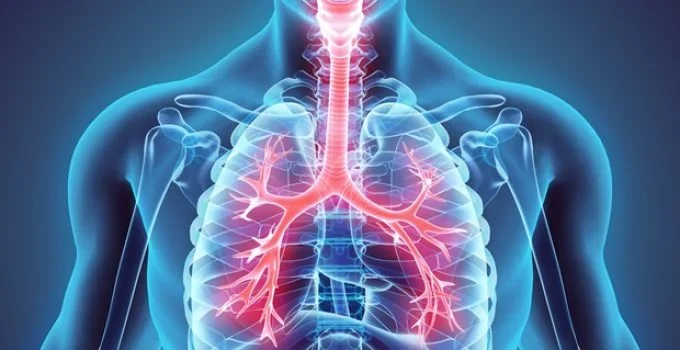What Are Main Organs of the Respiratory System?
The respiratory system helps you do something you probably never think about: breathe. But breathing isn’t just air going in and out—it’s a carefully coordinated job done by many organs working together. From your nose to the tiny air sacs in your lungs, each part plays a specific role in keeping you alive.
Let’s explore the organs of the respiratory system and learn how your body turns every breath into life-giving energy.
🔍Dive Deeper
- What Is the Respiratory System?
- The Nose and Nasal Cavity
- The Pharynx and Larynx
- The Trachea (Windpipe)
- The Bronchi and Bronchioles
- The Lungs and Alveoli
- The Diaphragm and Rib Muscles
- 🎯 Final Thoughts
- 📚 References
🌬️What Is the Respiratory System?
The respiratory system is how your body gets oxygen and gets rid of carbon dioxide. These two gases are essential for survival—oxygen gives your cells energy, and carbon dioxide is the waste they produce. Your respiratory system works kind of like an air highway, guiding every breath from the outside world deep into your lungs.
| Main Function | Key Organs Involved |
|---|---|
| Breathing in oxygen (O₂) | Nose, trachea, lungs |
| Removing carbon dioxide (CO₂) | Lungs, diaphragm |
| Filtering, warming, and humidifying air | Nose, nasal cavity |
| Sound production | Larynx (voice box) |
🧠 Did you know? The average person takes about 22,000 breaths every day! [1]
👃🏻The Nose and Nasal Cavity
The nose is where breathing usually begins. Inside your nasal cavity are tiny hairs and mucus that trap dust, pollen, and germs. The nose also warms and moistens the air, making it safer for your lungs.
Breathing through your nose is healthier than mouth breathing because it filters and prepares the air before it goes deeper into the body.
🧠 Fun fact: Your nose can produce up to 1 liter of mucus per day to trap harmful particles! [2]
🗣️The Pharynx and Larynx
After the nose, air passes into the pharynx (throat) and then the larynx, also known as the voice box. The larynx holds the vocal cords, which vibrate to create sound when you speak.
A flap called the epiglottis covers the entrance to the larynx when you swallow, stopping food from going into your lungs.
🧠 Interesting stat: The vocal cords can vibrate over 1,000 times per second during speech! [3]
The Trachea (Windpipe)
The trachea is a tube made of cartilage that keeps the airway open. It’s about 4 to 5 inches long and connects your larynx to the bronchi (tubes leading to the lungs). Inside the trachea, tiny hairs called cilia move mucus and trapped particles upward, helping to keep your lungs clean.
🧠 Stat check: Your trachea is lined with over 1 million cilia per square centimeter! [4]
𖣂The Bronchi and Bronchioles
The trachea splits into two large tubes called bronchi—one for each lung. These bronchi branch off into bronchioles, which are smaller tubes that spread air throughout the lungs. They act like tree branches, getting smaller and more numerous as they reach deeper into the lungs.
| Structure | Function |
|---|---|
| Bronchi | Carry air into lungs |
| Bronchioles | Distribute air throughout lungs |
🌿 Amazing fact: Your lungs contain about 30,000 bronchioles! [5]
🫁The Lungs and Alveoli
Your lungs are spongy organs that fill with air. Inside them are alveoli, which are tiny air sacs where oxygen enters your blood and carbon dioxide leaves. The walls of alveoli are super thin, making gas exchange quick and efficient.
Each lung contains millions of alveoli to give your body a huge surface area for breathing.
🧠 Big number: If stretched out flat, your alveoli would cover an area the size of a tennis court—about 70 square meters! [6]
💪The Diaphragm and Rib Muscles
The diaphragm is a large, dome-shaped muscle below your lungs. When you breathe in, it contracts and flattens, pulling air into your lungs. When you breathe out, it relaxes and rises, pushing air out.
Your rib muscles (intercostals) help move your ribcage to make room for air. These muscles work together with the diaphragm during every breath.
🧠 Muscle power: The diaphragm contracts around 20 times per minute, adding up to over 28,000 times a day! [7]
🎯 Final Thoughts
What are the main organs of the respiratory system? The respiratory system is like a well-designed air delivery network. Every organ—from your nose to your lungs—has a special job that helps your body get the oxygen it needs. Whether it’s the nasal cavity filtering air, the alveoli doing gas exchange, or the diaphragm pumping your lungs, every part plays a vital role. Understanding these parts helps us appreciate just how amazing every breath really is.
📚 References
- American Lung Association. “How the Lungs Work.” https://www.lung.org/lung-health-diseases/how-lungs-work
- Cleveland Clinic. “Mucus and Phlegm: What to Know.” https://my.clevelandclinic.org/health/articles/17841-mucus-and-phlegm
- National Institute on Deafness. “How Do We Produce Sound?” https://www.nidcd.nih.gov/health/how-do-we-hear
- MedlinePlus. “Trachea Anatomy.” https://medlineplus.gov/ency/imagepages/19186.htm
- Khan Academy. “Respiratory System Structure and Function.” https://www.khanacademy.org/science/biology/human-biology/respiratory-system/a/structure-of-the-respiratory-system
- National Geographic. “Your Body’s Hidden Tissues.” https://www.nationalgeographic.com/science/article/lung-capacity-human-body
- Smithsonian Science Education Center. “Your Lungs and How They Work.” https://ssec.si.edu/stemvisions-blog/breathing-life-human-body
📌Learn More About the Respiratory System
- What Are the Main Organs of the Respiratory System?
- How Do We Breathe?
- How Does the Diaphragm Work?
- How Do the Lungs Work?
- Why Do We Cough?
- Why Do We Hiccup?
